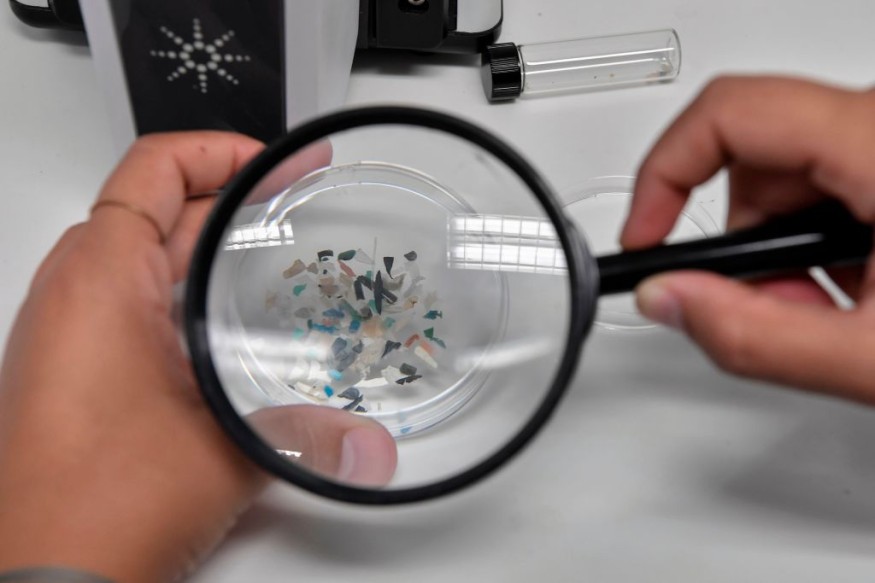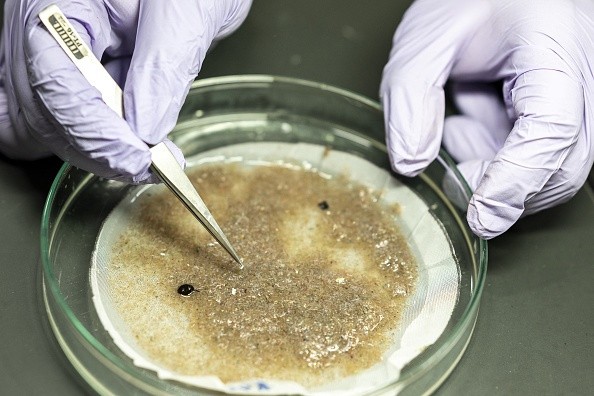Scientists are developing bionic robo-fish to clean microplastics from the waters. Tiny self-propelled robo-fish can swim around, grab on to free-floating microplastics, and repair themselves if they are harmed.

Developing the Robo-fish
Scientists have created a small robot-fish that can remove microplastics from seas and oceans by swimming about and absorbing them on its soft, flexible, self-healing body.
Microplastics are billions of microscopic plastic particles that break off from larger plastic items we use daily, such as water bottles, automobile tires, and synthetic T-shirts. They are one of the most serious environmental issues of the twenty-first century because once dispersed into the environment through the breakdown of larger plastics; they are challenging to remove, making their way into drinking water, produce, and food, harming the environment as well as animal and human health.
"It is critical to building a robot that can correctly collect and analyze harmful microplastic contaminants from the aquatic environment," said Yuyan Wang, a researcher at Sichuan University's Polymer Research Institute and one of the study's primary authors. Her team's groundbreaking creation is documented in a study published in Nano Letters.
Regarding water contamination, researchers at Sichuan University have devised a unique solution: developing a tiny self-propelled robo-fish that can swim around, grab on to free-floating microplastics, and repair itself if it gets cut or broken.
The robo-fish is only 13mm long, but owing to a light laser system in its tail, it swims and flaps around at over 30mm per second, similar to how plankton moves in moving water.
Also Read: For the First Time, Microplastics Contamination Has Been Detected Inside the Lungs
Building a Complex Robot

The researchers built the robot out of materials inspired by marine life: mother-of-pearl, also known as nacre, which is the inside coating of clam shells. The scientists generated a material comparable to nacre by stacking several tiny sheets of molecules per the chemical gradient of nacre.
According to the study, this resulted in a robo-fish that is stretchable, flexible to twist, and capable of pulling up to 5kg in weight. Most crucially, because the organic colors, antibiotics, and heavy metals in the microplastics have strong chemical bonds and electrostatic interactions with the fish's components, the bionic fish can adsorb neighboring free-floating particles of microplastics.
his causes them to cling to the surface, allowing the fish to gather and eliminate microplastics from the water. Furthermore, the newly produced material appears to have regeneration properties, according to Wang, who specializes in producing self-healing materials. So the robot fish can recover to 89 percent of its capability and continue adsorbing even if it sustains some damage or cutting - which is likely if it pollutes in stormy seas.
Wang emphasizes that this is merely a proof of concept and that much more study is needed, particularly into how this may be used in the real world. The soft robot, for example, now only functions on water surfaces, so Wang's team will soon be working on more functionally complicated robo-fish that can move deeper beneath the water. Nonetheless, Wang believes this bionic design might serve as a springboard for other such ventures.
Use of Nanotech
According to Philip Demokritou, director of the Nanoscience and Advanced Materials Research Center at Rutgers University, who was not engaged in this work, nanotechnology will be one of the most crucial actors in the battle against microplastics.
Demokritou's lab is similarly interested in utilizing nanotechnology to remove microplastics from the environment - but instead of cleaning them up, they are focused on replacing them. In the journal Nature Food, he unveiled the project of a novel plant-based spray coating this week, which can serve as an environmentally benign alternative to plastic food covers.
Their case study demonstrated that this starch-based fiber spray might protect against infections and transportation damage just as well as, if not better, conventional plastic packaging choices.
This is low-hanging fruit for the area of nanotechnology, according to Demokritou, and as material research advances, so will the multi-pronged strategy of replacing plastic in our daily lives and filtering out its microplastic residue from the environment.
However, there is a significant difference between an invention and an innovation, according to Demokritou. Nobody has ever thought of inventing anything. Right? However, innovation can potentially alter people's lives since it can be commercialized and scaled.
Related Article : Scientists Creates Enzyme that Breaks Down Plastics Turning Centuries of Degradation Into Days
For more environmental news, don't forget to follow Nature World News!
© 2025 NatureWorldNews.com All rights reserved. Do not reproduce without permission.





